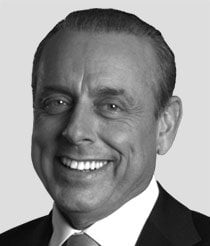I'm not usually the kind of guy to say, "I told you so."
But you know what? I'm saying it.
Dark pools - private markets unavailable to the public - and high-frequency trading are manipulative schemes run amok.
They weren't always. Both were the result of unintended consequences. But that's all behind them. In front of them now are civil and criminal lawsuits.
Late yesterday, New York State Attorney General Eric Schneiderman charged Barclays Plc. with fraud over how it markets its dark pool and how it operates it.
In a press conference yesterday after the market had closed, the AG said, "Barclays dramatically increased the market share of its dark pool through a series of false statements to clients and investors about how and for whose benefit Barclays operates its dark pool. Contrary to Barclays' representations that it implemented special safeguards to protect clients from aggressive or predatory high frequency traders, Barclays is accused of operating its dark pool to favor high frequency traders."
But that's not all Barclays did. Keep reading, and I'll explain all...
Dark Pools: Diving In
Barclays not only omitted pertinent information and facts about high-frequency traders' (HFT) access to their dark pool, but they falsified written material and presentation slides in a way that smacks of blatant fraud.
The promised protections were missing, among them limiting "predatory" players from the dark pool. And Barclays also allowed anyone into the dark pool.
Far worse, their own HFT desks were in the pool picking off clients.
The marketing material was obviously influential in attracting clients. Barclays' dark pool became the largest in the United States. There are some 50 dark pools operating in America - that's on top of 11 public exchanges.
And you can bet your bottom dollar there was money involved. According to market research firm TABB Group, the top three dark pools operated by Barclays, Credit Suisse, and UBS earned about $800 million in commissions in 2013.
That's just commissions, folks. There's no clarity on how much they made on their high-frequency trading, much of which was earned by reading their clients' dark pool orders and front-running them. My guess is that they made billions off their dark trading.
And here's what I'm predicting is headed our way next:
There are going to be more charges against more dark pool operators because they pretty much all work the same way. It's how the game is played. What's staggering to me is the stupidity of institutional money managers who go into these dark pools not understanding what the game is and how they're being teed-up.
As a result of what's coming to light (they should have just been reading my stuff all these years), money managers, on behalf of "the public" whose money they manage, mutual fund managers, pension asset managers, and hedge funds, too, are going to sue for the billions they've lost to this hand-in-glove scheming.
It's hand in glove because these money managers get you into their dark pools to protect you from high-frequency trader access and then front-run your orders.
They themselves are the wolves in the henhouse.
Maybe, just maybe, the end result of this will be that some of the inequities that have been built into the market systems we believe (well, not me, I don't believe) are fair and orderly and transparent might just become more so.
We all better hope so, because it's not just about fair and transparent. It's about how the market has been undermined and how it could collapse one day, literally, and trillions of dollars could be lost in a matter of days. And worse, whatever remaining confidence people have in the markets would evaporate and devastate U.S. capital markets and the economy.
If these schemes aren't wiped clean, and the market crashes because of the mechanical mayhem inherent in the operating machinery that we rely on, don't say I didn't tell you so.
More from Shah Gilani: The public has been hoodwinked by central banks and governments into thinking deflation is bad, when in fact it's a healthy corrective counterbalancing of excesses that build up in free-market economies. Here's the truth about deflation - and how the fearmongers are really screwing us over...
About the Author
Shah Gilani boasts a financial pedigree unlike any other. He ran his first hedge fund in 1982 from his seat on the floor of the Chicago Board of Options Exchange. When options on the Standard & Poor's 100 began trading on March 11, 1983, Shah worked in "the pit" as a market maker.
The work he did laid the foundation for what would later become the VIX - to this day one of the most widely used indicators worldwide. After leaving Chicago to run the futures and options division of the British banking giant Lloyd's TSB, Shah moved up to Roosevelt & Cross Inc., an old-line New York boutique firm. There he originated and ran a packaged fixed-income trading desk, and established that company's "listed" and OTC trading desks.
Shah founded a second hedge fund in 1999, which he ran until 2003.
Shah's vast network of contacts includes the biggest players on Wall Street and in international finance. These contacts give him the real story - when others only get what the investment banks want them to see.
Today, as editor of Hyperdrive Portfolio, Shah presents his legion of subscribers with massive profit opportunities that result from paradigm shifts in the way we work, play, and live.
Shah is a frequent guest on CNBC, Forbes, and MarketWatch, and you can catch him every week on Fox Business's Varney & Co.



